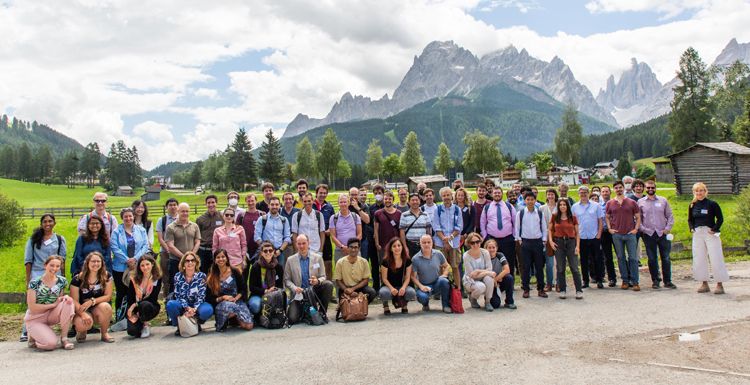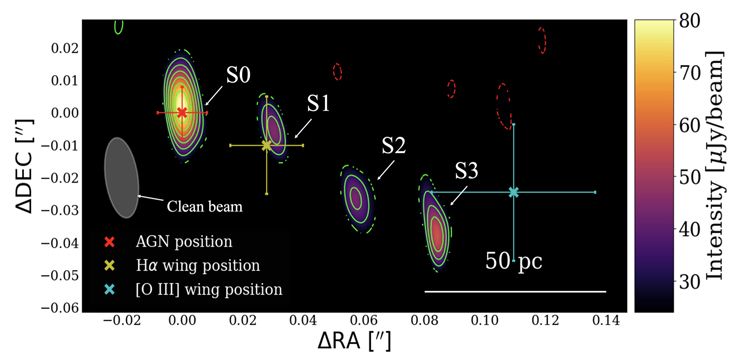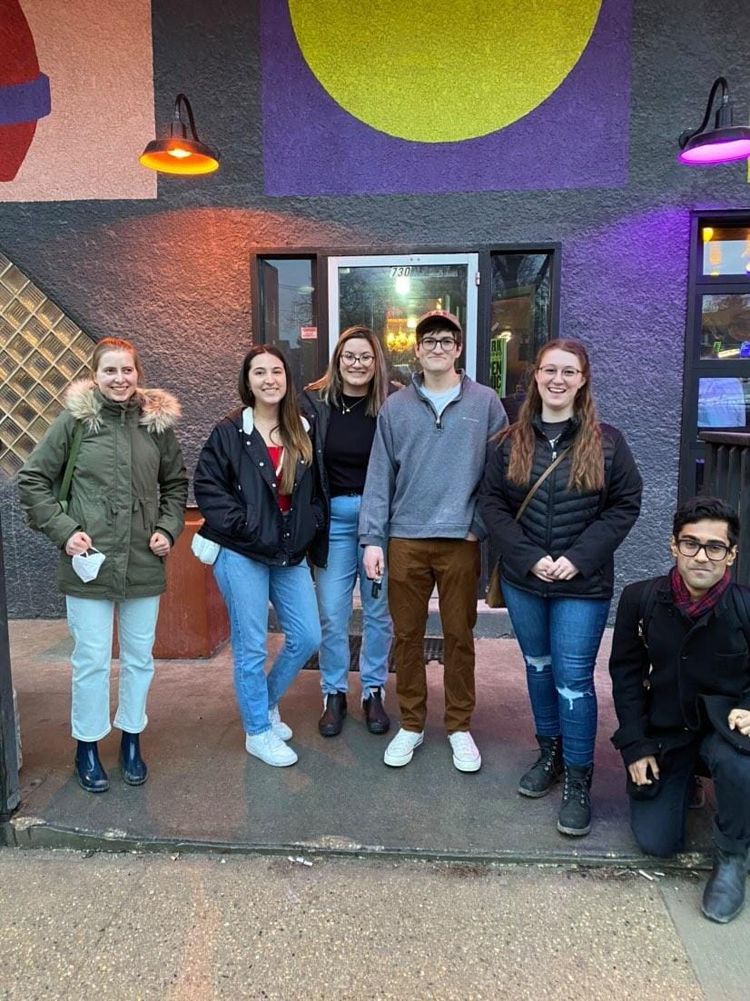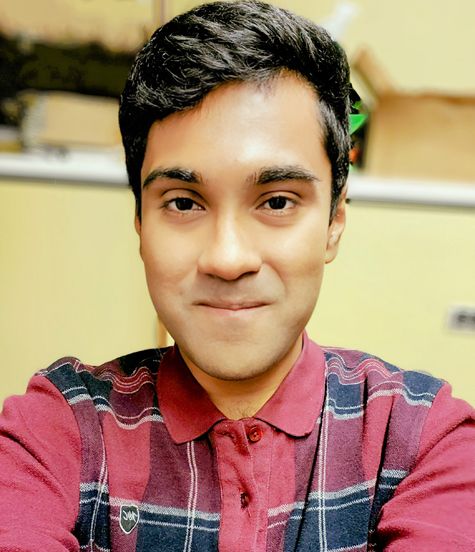Early Career Scientist Spotlight
Dr. Mainak Singha (he/him)
Astrophysicist
Astroparticle Physics Laboratory (661)
What is your research focus?
My primary research interest lies in supermassive black holes and galaxy evolution. I delve into these cosmic monsters, exploring their existence from the event horizon to the cosmic dawn. Currently, there are significant unanswered questions about the formation of these supermassive black holes in the early universe, their growth process, and the factors that triggered their inception. What intrigues me most is the juxtaposition of a universe teeming with star-forming galaxies that spurred cosmic reionization, while simultaneously hosting the discrete, almost 'invisible' growth of massive black holes. Such a phenomenon strongly suggests a profound connection between star formation/reionization and black hole growth. This is exactly where my interest lies. I am trying to answer all of these questions:
- How do you to feed/grow a black hole?
- How does the black hole/starburst feed back to its host galaxy?
- Could we precisely measure the black hole spin and image it?
- When these black holes were young (z=15), what was the universe like?
- Can we map the star-formation sites within galaxies?
- Can we map the cosmic star formation history that took place between z=9-20?
I utilize multi-wavelength observations, ranging from radio telescopes like the Very Large Baseline Array to X-ray sources like Chandra. I integrate data from high-resolution integral field unit observations, such as the Multi-Unit Spectroscopic Explorer (MUSE) at the Very Large Telescope (VLT) in both wide and narrow field modes, the Near Infrared Spectrograph (NIRSpec), and the Mid-infrared Instrument (MIRI) at the James Webb Space Telescope (JWST). Additionally, I incorporate spectroscopic data from instruments like X-Shooter. It's akin to piecing together a complex puzzle, where each wavelength contributes a vital piece of information. A comprehensive understanding only emerges when we gather data across the entire electromagnetic spectrum. A significant portion of my research focuses on putting observational constraints on theoretical models, for which I closely collaborate with many renowned theorists.

Credit: Massimo Gaspari
What motivated you to pursue a career in astrophysics?
In my final year of undergrad, the movie "Interstellar" by Christopher Nolan hit the screens. It had these mind-blowing scenes where Cooper, Dr. Brand, and Dr. Mann embarked on this wild journey through a wormhole. Then, they got ridiculously close to the supermassive black hole, "Gargantua," and I mean, Cooper almost didn't make it. That's when it all began – my deep fascination with black holes and wormholes. I couldn't stop talking to my friends about it. We'd have these marathon discussions about "Interstellar." We pondered if reality could be warped like that. This obsession fueled my dream of becoming an astrophysicist. Fast forward to today, and I'm diving into the real-life equivalents of 'Gargantua,' exploring everything from event horizons to the dawn of the cosmos. It's like a lifelong adventure that started with a movie.
What is one research project that you are particularly excited about, and why?
I'm incredibly passionate about detecting jets that originate close to supermassive black holes and understanding their role in driving super-winds or outflows. For quite some time, the scientific community has held the belief that there is a distinct division among supermassive black holes based on their radio emissions. We have “radio-loud” sources, which display an exceptional level of radio emission, which significantly surpasses their optical emissions. These sources are characterized by the presence of large-scale relativistic plasma jets that extend over several kiloparsecs. On the other hand, “radio-quiet” ones exhibit notably weak and unresolved radio emissions. Therefore, it was highly doubted that they could launch collimated jets.
Our recent research has been focused on investigating these radio-quiet sources using a powerful technique called 'Very Large Baseline Interferometry' (VLBI). What we've observed in these radio-quiet sources is quite remarkable – we've detected collimated radio jets in a nearby galaxy (z=0.04). This discovery holds profound implications for our comprehension of black hole activity and their evolutionary processes.

Credit: Mainak Singha
What skills are most useful to you in your work, and where did you develop those skills?
The skills that have proven most valuable for my research include:
- Coding: Back during my undergraduate years, I devoted countless nights to simulating complex 3-body problems. This hands-on experience of coding and debugging was a significant learning curve and has since been an indispensable skill in my research journey.
- Time management: Throughout my Ph.D. program, I found myself juggling numerous projects and taking on multiple administrative roles within various student unions. To navigate this demanding workload successfully, I realized the importance of effective time management. I devised multiple Gantt charts to organize and prioritize my various responsibilities, which significantly enhanced my overall efficiency.
- Communication: During my time in Dublin, I actively engaged in science outreach, reaching out to diverse audiences, from pubs to schools. People exhibited a genuine curiosity for astronomy, and I found myself explaining my research and answering astronomy-related questions to new individuals almost every day. This experience proved instrumental in honing my scientific communication skills, making me a more effective communicator in my field.
What keeps you inspired by your work?
I'm absolutely fascinated by the unpredictability of the universe. It's like a puzzle that keeps me on my toes. You see, no matter how solid my theories or explanations are for around 90% of my research sample, there's always that 10% that throws me a curveball, defying all of my expectations. It's this challenge, the fact that I haven't stumbled upon that elusive 'Theory of Everything' even for my samples yet, that keeps me deeply connected to my research. To be honest, it's the unpredictability that keeps things interesting. If we could easily explain everything about the universe, it would be a lot less exciting. I'm in this for the adventure, the thrill of uncovering the unknown, and I wouldn't have it any other way.

Credit: Selma Osmanoviic
What do you like to do in your free time?
I love to explore different countries, immersing myself in their languages and cultures. Whenever I find time, I absolutely love to visit Germany and educate myself about the language and culture. I am also trying to improve my French skills – it is such a beautiful language!! I am also a super outdoorsy person. Whether it's biking, swimming, hiking, or even a game of soccer- I am always up for it. I genuinely enjoy outreach and volunteering – it's a wonderful way to connect with people. I'm also a dedicated advocate for equity, diversity, and inclusion. In my downtime, I enjoy cooking/baking, painting, photography, D&D, etc.
Where do you see yourself in the near future?
Having experience in developing space mission concepts and numerous satellites, I envision myself continuing to engage in the development of space missions. It would be truly exhilarating to design a space probe dedicated to exploring black holes, capable of capturing super-resolution images of the various components within 'active galactic nuclei’, tracing its accretion and spin. This explorer could detect through X-rays or even through radio frequencies. Additionally, I imagine the possibility of a 'dawn explorer' mission, focused on unraveling the mysteries of primordial galaxy evolution and the formation of black holes.
Biography
Home Town:
Kolkata, India
Undergraduate Degree:
B.Sc. in Physics, St. Xavier’s College, Kolkata, India
Post-graduate Degrees:
M.Sc. in Space Science & Technology, University College Dublin, Dublin, Ireland
Ph.D in Physics, University of Manitoba, Winnipeg, Canada

